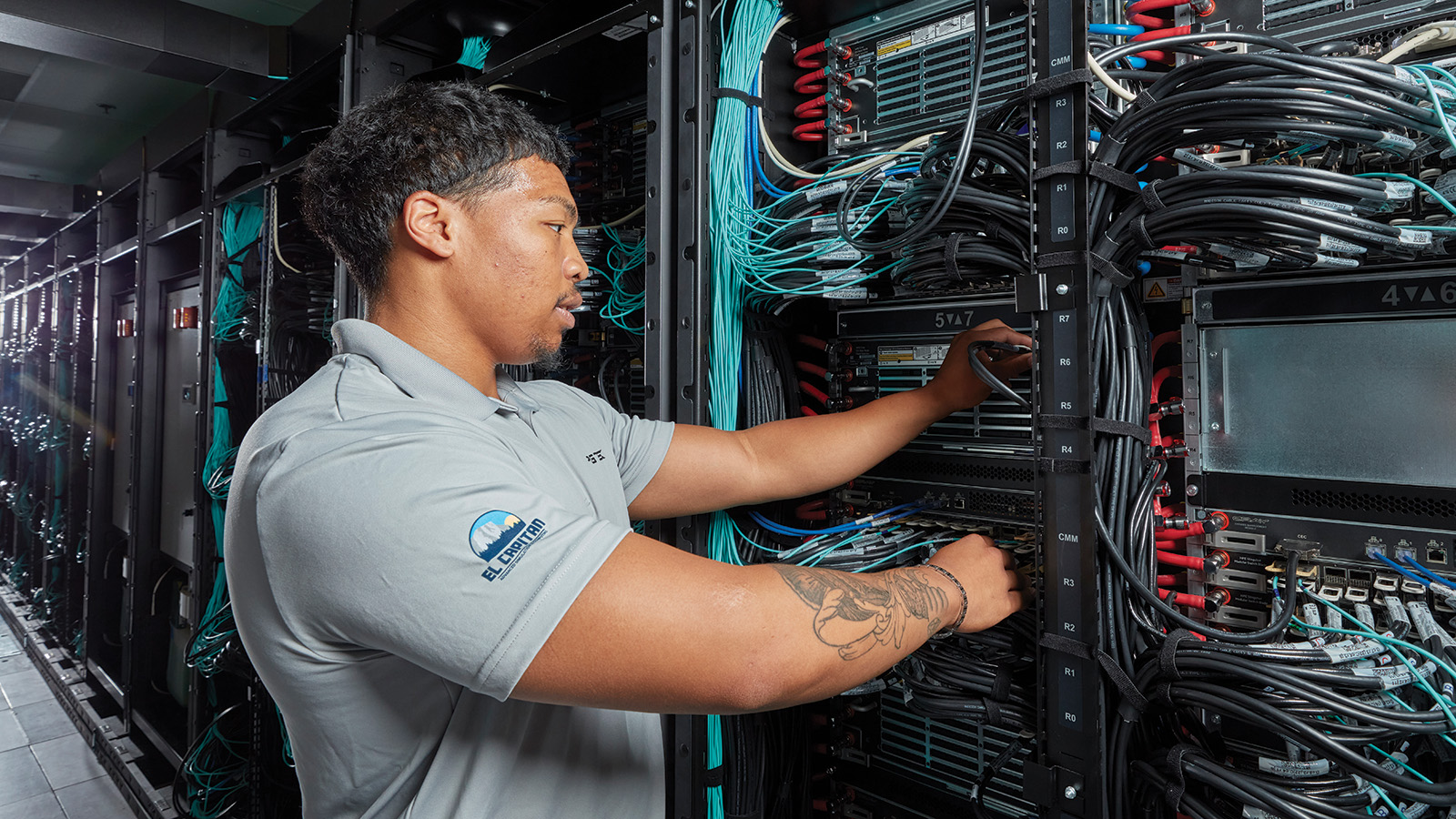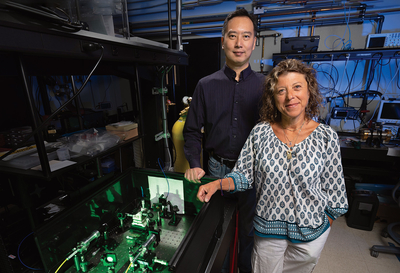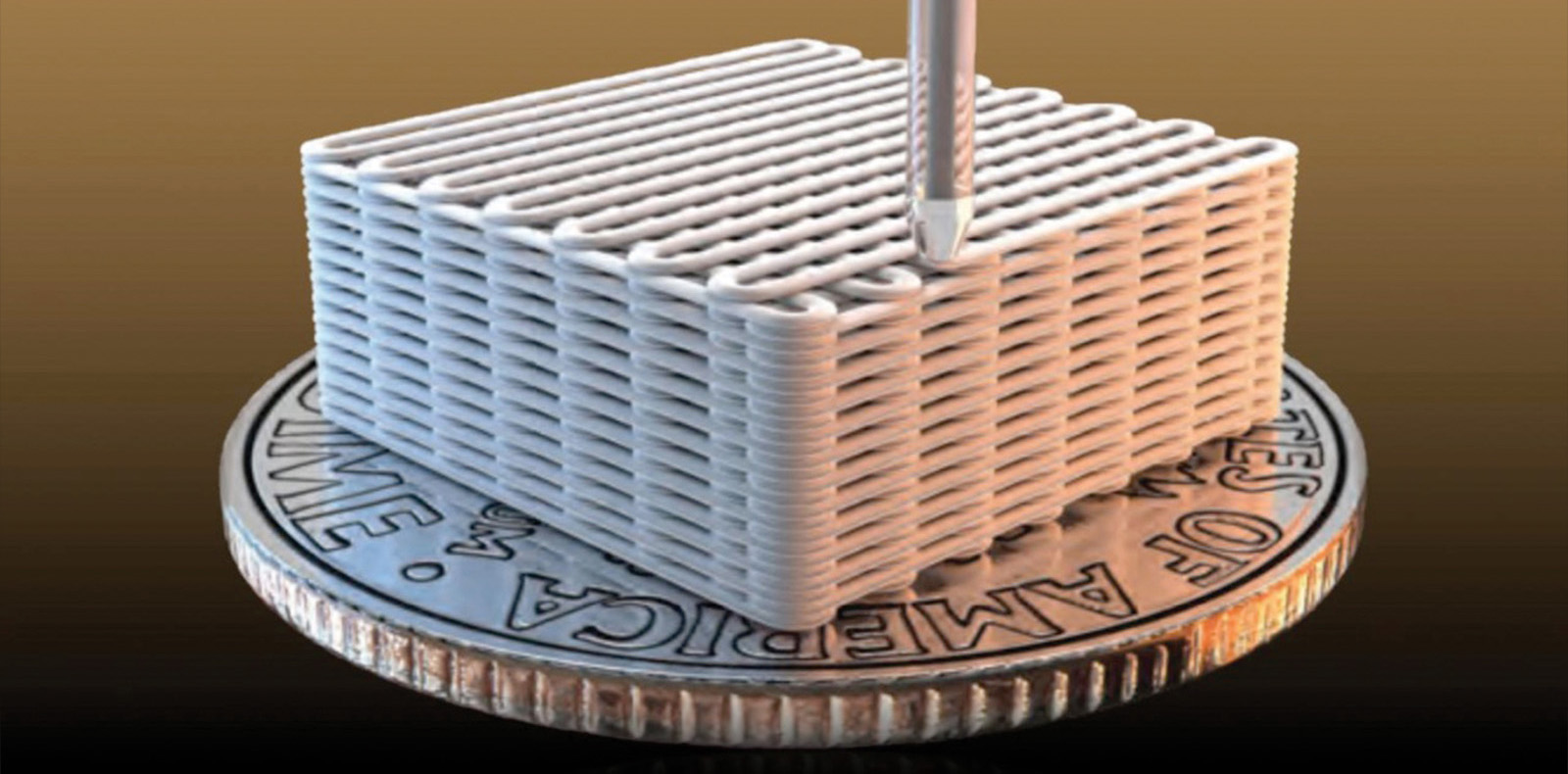Sharing science and technology expertise and capabilities to meet our nation’s most important needs
LLNL engages in wide-ranging partnerships with other laboratories and research institutions, academia, and industry. Many collaborations integrate disparate expertise and capabilities with focus on innovations to meet challenging mission objectives. Others serve to transition science and technology (S&T) breakthroughs into new applications and products.
Collaborating to Deliver El Capitan
The road to NNSA’s first exascale supercomputer, El Capitan, has entailed many partnerships, including support from NNSA’s Advanced Simulation and Computing Program and DOE’s Exascale Computing Project (ECP), which was launched by NNSA and the DOE Office of Science in 2016 to prepare the DOE laboratories for delivery of exascale computing in 2022. At LLNL, the effort has engaged hundreds of employees, and in FY 2023 included hardware deliveries, environmental testing, and facility completion before arrival of El Capitan. Preparatory activities have been under the purview of the El Capitan Center of Excellence, a collaboration of developers and experts at the NNSA laboratories. Considerable effort has gone into early hardware deployment and testing to fix issues ahead of larger system deployment. For example, early access systems—predecessors to El Capitan delivered in 2021—were connected to the 85-megawatt Exascale Computing Facility Modernization infrastructure installed in 2022.
Laboratory computer scientists have provided leadership within the high-performance computing (HPC) community in developing open-source software for HPC systems—and now exascale supercomputers. For example, Tri-Lab Operation System Stack, which was developed at LLNL and is now widely employed as an operating system for commodity HPC clusters, will be used by El Capitan. Other examples include two R&D 100 Award winners in 2023. Variorum is a vendor-neutral software library for optimizing and managing power and energy on large-scale supercomputers. ZFP, also developed at LLNL, is an open-source software package that compresses numerical data exceptionally fast and allows reductions in data movement, which is critical because data movement is largely the limiting factor in HPC performance.
The nEXO Experiment
In FY 2023, DOE allocated to LLNL $2.35 million from Inflation Reduction Act funding to support the nEXO project, which the Laboratory leads for the DOE Office of Science. The project is developing capabilities and plans for constructing a large detector to search for a rare type of nuclear decay called neutrinoless double beta decay (NDBD). The large collaborative effort is engaging approximately 200 scientists and technologists from 36 institutions and eight countries, including five DOE national laboratories and more than a dozen U.S. universities. NDBD has not yet been observed and is inconsistent with known laws of physics since the decay process generates matter without creating antimatter. Detection would be a major discovery and provide key insight into the formation of the universe. The search for NDBD requires a large detector isolated from cosmic rays to be built at a depth of 2 kilometers in SNOLAB, Canada’s deep underground research laboratory, located in a mine in Ontario, Canada. The funding will advance the nEXO project toward DOE Critical Decision-1.
An Inertial Fusion Energy Hub
In December 2023, DOE awarded a four-year, $16 million project to a multi-institutional team led by LLNL to accelerate inertial fusion energy (IFE) research. This effort will be carried out by the newly established IFE Science and Technology Accelerated Research for Fusion Innovation and Reactor Engineering (STARFIRE) Hub. Supported by the DOE Office of Fusion Energy Sciences, the hub consists of members from seven universities, four U.S. national laboratories, one international laboratory, three commercial entities, one philanthropic organization, and three private IFE companies. IFE-STARFIRE will accelerate demonstration of high-gain target designs, target manufacturing and engagement, and diode-pumped solid state laser technologies. The hub and an LLNL institutional initiative in IFE synergistically complement NNSA’s major investments in inertial confinement fusion research and development for national security applications.
Partnering with the U.S. Space Force
In 2023, the United States Space Force selected subject matter experts from the Laboratory to help stand up its new Tools, Applications, and Processing (TAP) laboratory dedicated to advancing military space domain awareness (SDA). In October, the LLNL team attended a kick-off meeting of the SDA TAP laboratory’s Project Apollo technology accelerator, which is designed to encourage rapid government, industry, academic, and allied collaboration. As a Federally Funded Research and Development Center partner, LLNL will perform testing and evaluation of the applications that Project Apollo produces to ensure their operational readiness. These efforts will leverage the Laboratory’s unique capabilities in modeling and simulation, HPC, and uncertainty quantification.
Innovative Industrial and Energy Partnerships
LLNL is benefiting the U.S. economy with innovative technology and methods. In FY 2023, Livermore obtained 196 new patents, asserted 91 new copyrights, and executed 7 new patent licenses. Licensing income for the year totaled approximately $6.1 million. Among honors, LLNL earned three R&D 100 awards from R&D World Magazine. Two awards were for software important to efficient exascale supercomputing (see Partnerships) and the third award for an exascale computing project to aid cancer research (see Science and Technology). The Laboratory also secured four grants from DOE’s Technology Commercialization Fund. LLNL researchers will work with industrial partners on 3D printing of battery anodes, hydrogen storage for heavy-duty trucks (see Energy and Environment), a fiber-optic sensor detecting leakage from hydrogen storage tanks, and self-assembling microgrids for energy resilience. The Laboratory also was awarded a Federal Laboratory Consortium Best in Far West Region Award for its multifunctional, 3D-printable inks for energy storage applications licensed to MilliporeSigma. Additionally, energy-focused projects are being pursued with academic collaborators through the DOE Office of Science’s Energy Frontier Research Centers program.







